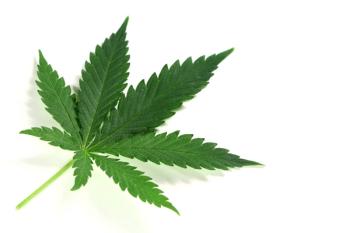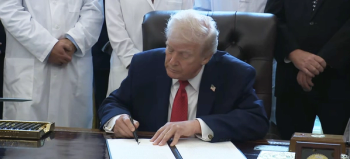
Addressing the Environmental Impact of Cannabis Cultivation: A Focus on Sustainable Practices
Growing cannabis, both indoors or outdoors, impacts the environment in several significant ways and one challenge of today’s cultivators is to consider how to lessen the negative effects of overwatering, pesticides, energy usage, and plastic pollution.
Environmentally conscious cannabis cultivation has been a concern for years. For example, in response to the environmental destruction from outdoor cannabis cultivation in northern California, a 2017 bill allocated funds to support four restoration projects totaling $1.3 million (1).
Last year, the Sustainable California Grown Cannabis Pilot Program (SCGC Pilot Program) was created to collect and compile data into a Best Management Practices Manual to guide outdoor cannabis cultivation (2). “One of the primary goals of regulating cannabis in California is to help address environmental benefits and concerns associated with its cultivation,” the SCGC Pilot Program website stated (2). “For example, greenhouse gas emission (GHG) reduction potential, sustainable land use, soil health benefits, ecological health benefits, pesticide use, and water resource management, are some of the many environmental interests associated with cannabis agriculture.” The program continues to offer grants to fund more watershed restoration (1).
“Cannabis is a water-intensive crop,” Modern Farmer explained in their recent article “Growing Green: Cannabis Farmers Tackle Sustainability”(3). “Grown indoors or in the wild, each plant requires between five and six gallons of water per day—nearly twice that of other commodity crops.”
In response, some farmers build and manually monitor their own irrigation systems, or some use water from wells drawing from aquifers, which bypasses the need to tap into streams or municipal water and also ensures water in times of drought (3). Others opt for low-impact, “minimum-risk” pesticides such as essential oils and predatory insects to help keep chemicals out of water systems (3).
Destruction of the environment and local water systems became such a significant issue in Oregon that last month Governor Tina Kotek signed a law holding landowners responsible for the cleanup of illegal cannabis growing operations and prohibits the unauthorized use of local water sources (4).
Lighting for indoor growing of the cannabis plant provides challenges as well. “For years, the industry has relied on high-intensity discharge lamps such as metal halides and high-pressure sodium lights (HSPs), fixtures considered efficient by 1960s and 1970s standards,” Modern Farmer continued (3). “Compared to HSPs, light-emitting diodes [LEDs] provide more light, require very little energy to run and emit far less heat, substantially reducing the demand for cooling and the energy in general required to produce cannabis.” Alternative energy sources include solar or wind, which cuts the reliance on petrochemicals, while installing vents to cool plants can avoid the need HVAC systems (1).
Plastic is the most commonly used packaging in the industry, due to reasons such as limited child-proofing options and pricing (3). Some options to avoid plastic packaging include cardboard, glass, and paper (or a combination of these) to encourage recycling over single-use containers (5). A Canadian study published earlier this month (6) tested the addition of hemp to bio-based materials as a plastic alternative, and a House committee recently addressed the need to explore bio-based alternatives to plastic, while also noting the continuing growing of cannabis on public land in California (8).
They are perhaps ironically fitting solutions to see for the future–government-funded sustainable cannabis cultivation practices and hemp-based alternatives to harmful plastics.
References
- Cannabis restoration grant program
https://wildlife.ca.gov/Conservation/Watersheds/Cannabis-Restoration-Grant#:~:text=Currently%2C%20the%20Cannabis%20Restoration%20Grant,cannabis%20cultivation%2C%20and%20related%20activities (accessed Jul 26, 2023). - Sustainable California Grown Cannabis Pilot Program
https://www.grants.ca.gov/grants/sustainable-california-grown-cannabis-pilot-program/ (accessed Jul 26, 2023). - Mora, G. Growing green: Cannabis farmers tackle sustainability
https://modernfarmer.com/2023/07/growing-green-cannabis-farmers-tackle-sustainability/ (accessed Jul 26, 2023). - McEvoy, E. Landowners in Oregon are now responsible for cleanup of illegal growing operations
https://www.cannabissciencetech.com/view/landowners-in-oregon-are-now-responsible-for-cleanup-of-illegal-growing-operations (accessed Jul 26, 2023). - Craig, D.
https://www.cannabisbusinesstimes.com/article/6-sustainable-packaging-tips-cannabis-growers/ (accessed Jul 27, 2023). - McEvoy, E. Adding hemp to create a new bio-based alternative to plastic
https://www.cannabissciencetech.com/view/adding-hemp-to-create-a-new-bio-based-alternative-to-plastic (accessed Jul 26, 2023). - Colli, M. Congressional spending bill highlights need for research on hemp as plastic alternative and cannabis impaired driving test
https://www.cannabissciencetech.com/view/congressional-spending-bill-highlights-need-for-research-on-hemp-as-plastic-alternative-and-cannabis-impaired-driving-test (accessed Jul 26, 2023).
Newsletter
Unlock the latest breakthroughs in cannabis science—subscribe now to get expert insights, research, and industry updates delivered to your inbox.




